The Navajo Nation is home to 157,000 Navajos (about half the Navajo population of the U.S.) who live in both traditional hogans and more modern buildings on the 27,000 acre reservation which spans New Mexico, Arizona and Utah. The land is arid and contains significant groundwater contamination from the uranium mines that once dotted the Nation.
Comb Ridge in Navajoland
Studies completed in 2020 indicated that 15% of people living in Navajoland do not have access to a consistent supply of clean water in their homes. Without this access, residents must haul water from remote water sources under challenging conditions. Water quality at these sources is often untested and their long-term sustainability is unknown. Relying on these often-unregulated sources may lead to health concerns. Having to transport water over long distances or relying on bottled water creates additional financial challenges for families.
Texas Water Mission (TWM) began outreach via the Episcopal churches in the Utah portion of the reservation in 2019. The three churches in that region are St. Christopher’s Mission in Bluff, St. John’s the Baptizer in Montezuma Creek, and St. Mary’s of the Moonlight in Oljato.
St. Christopher’s Bluff has an artesian well on it’s property that provides clean water to the community 24/7. The other two churches also want to provide this resource, so TWM began working with St. John’s the Baptizer to develop a drinking water source at that location. After research into various options, it was determined that installation of a 1500 gallon cistern with solar pump was the most efficient means of achieving the goal.
Cistern placed in ground outside St. John’s the Baptizer community center
Installation of cistern, solar panels and pump occurred in May of 2020. The cistern is filled regularly with water hauled from a nearby Navajo Tribal Utility Authority (NTUA) water station by church caretaker Walter Shorty. Walter was provided with an Aquagenix Water Testing kit (with online data sharing application) to ensure that the drinking water remains safe after transportation and sitting in the cistern.
Water filter and reverse osmosis system installed at St. John’s the Baptizer
Aquagenix water testing kit for checking cistern water
At the same time TWM was in Utah overseeing the installation of the St. John’s drinking water cistern, the director was also coordinating with members of John’s Hopkins Center for American Indian Health and the Utah Navajo Health System (UNHS) on a COVID-19 emergency response program to bring handwashing stations and wellness boxes to Navajo families in need. The following photo gallery depicts the program, which delivered the stations (with an initial 12 gallon container of water for handwashing) and the wellness boxes to to 120 families in the Montezuma Creek (60), Navajo Mountain (30), and Oljato (30) communities. The project involved construction of the handwashing stations; packing the wellness boxes (which included sanitizers, detergent, paper and cleaning products, masks and gloves, toiletries, and basic foodstuffs); and distribution of the items. Much of the work was done by volunteers organized by TWM.
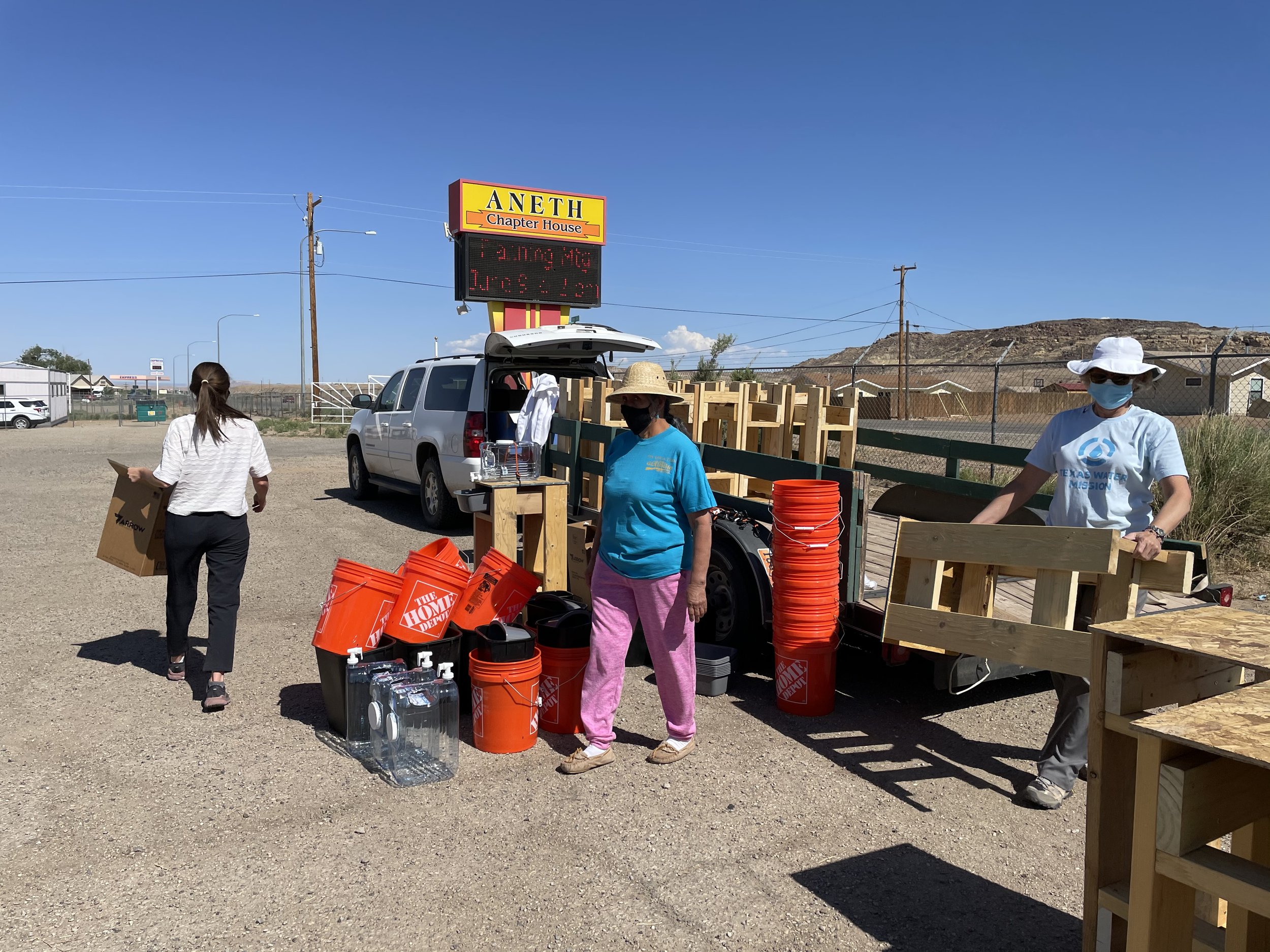
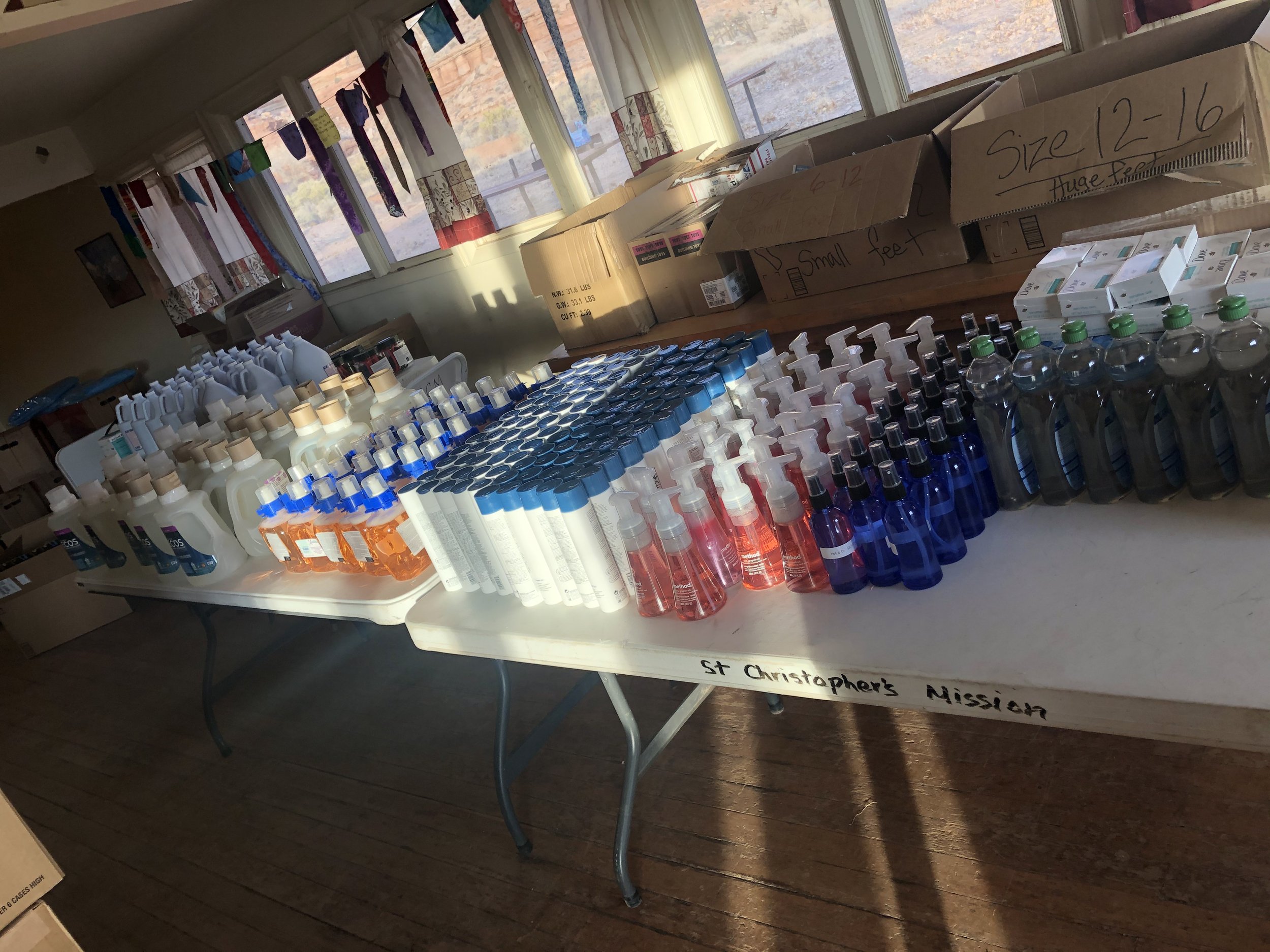

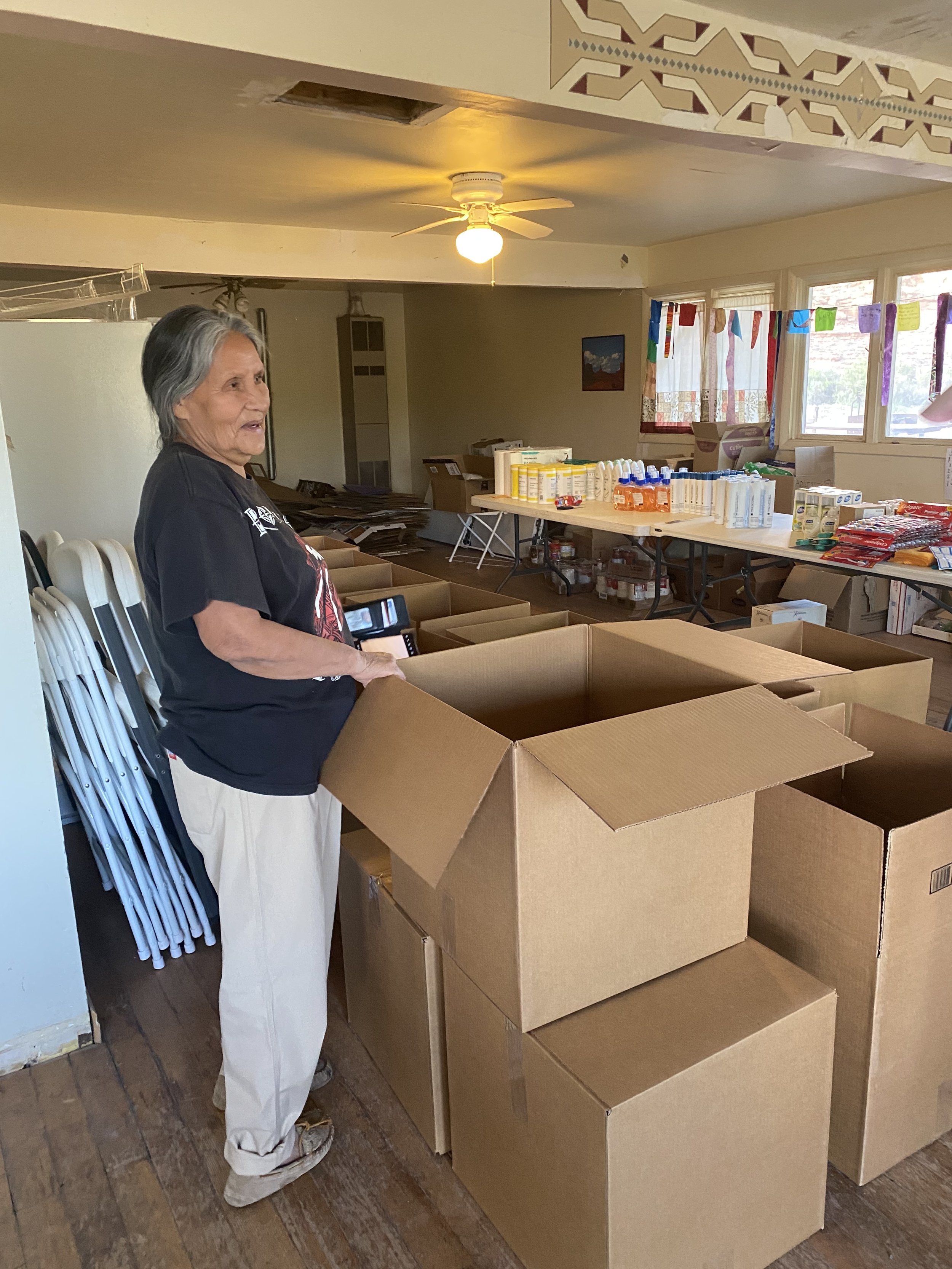
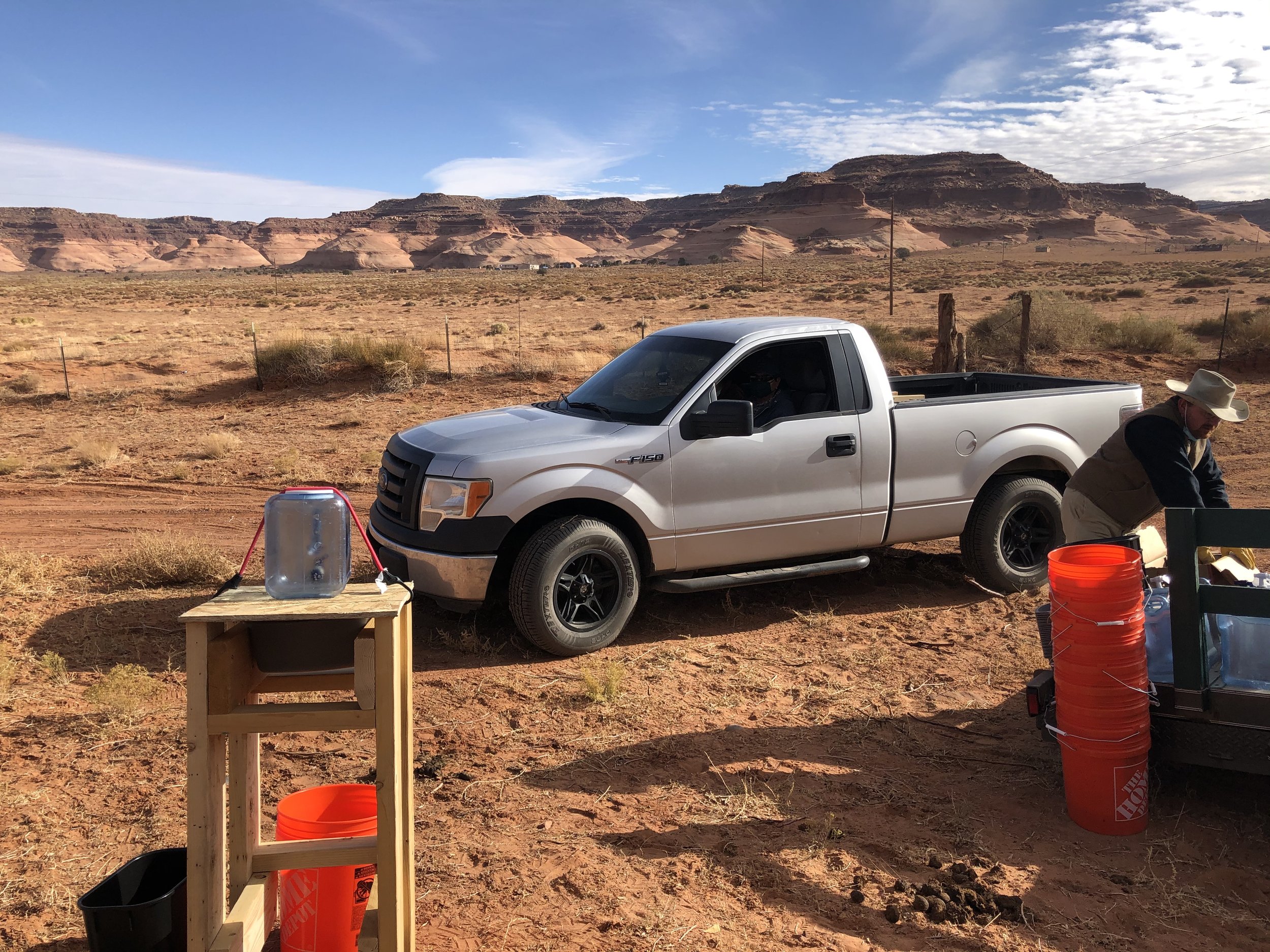
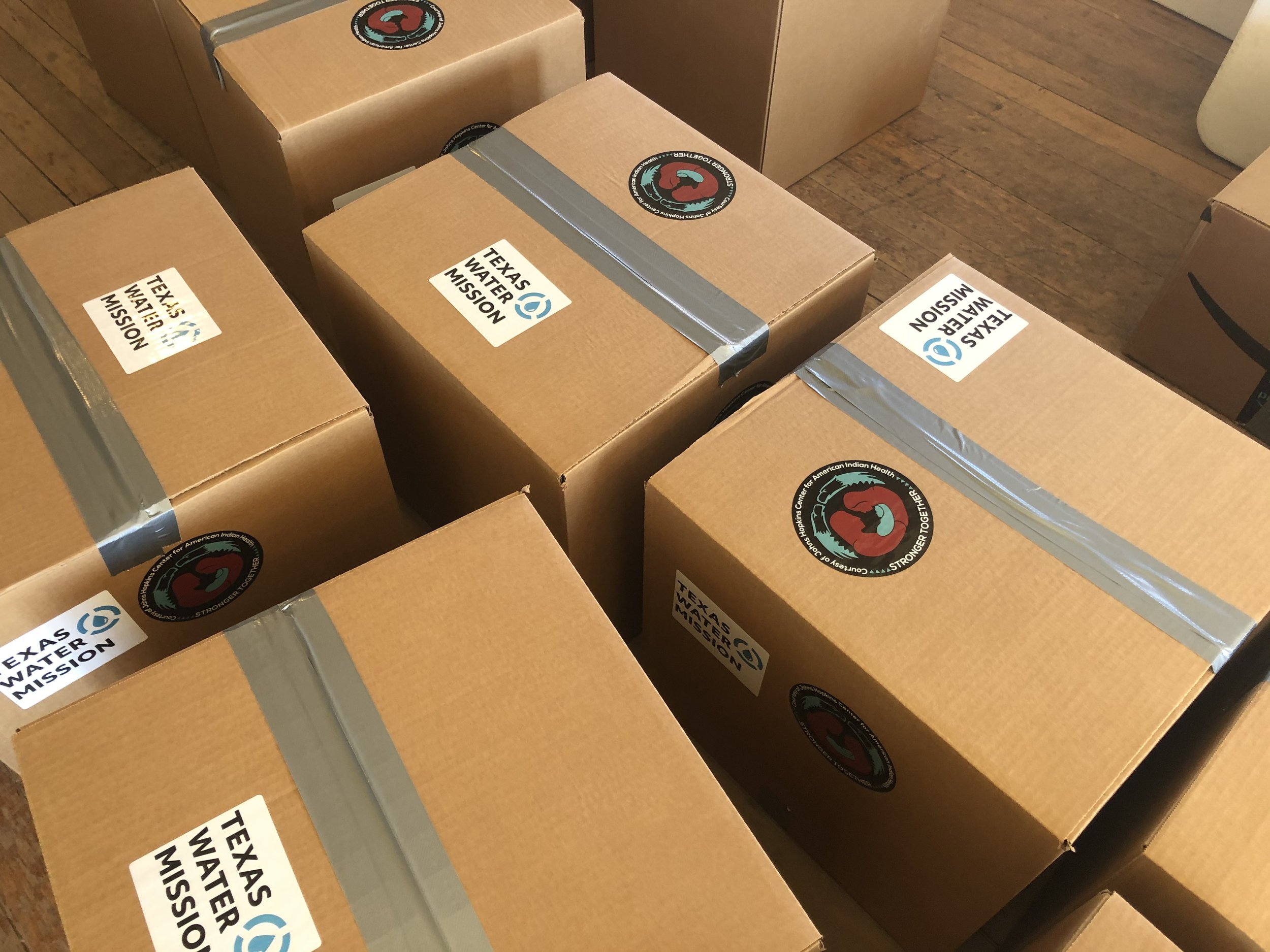
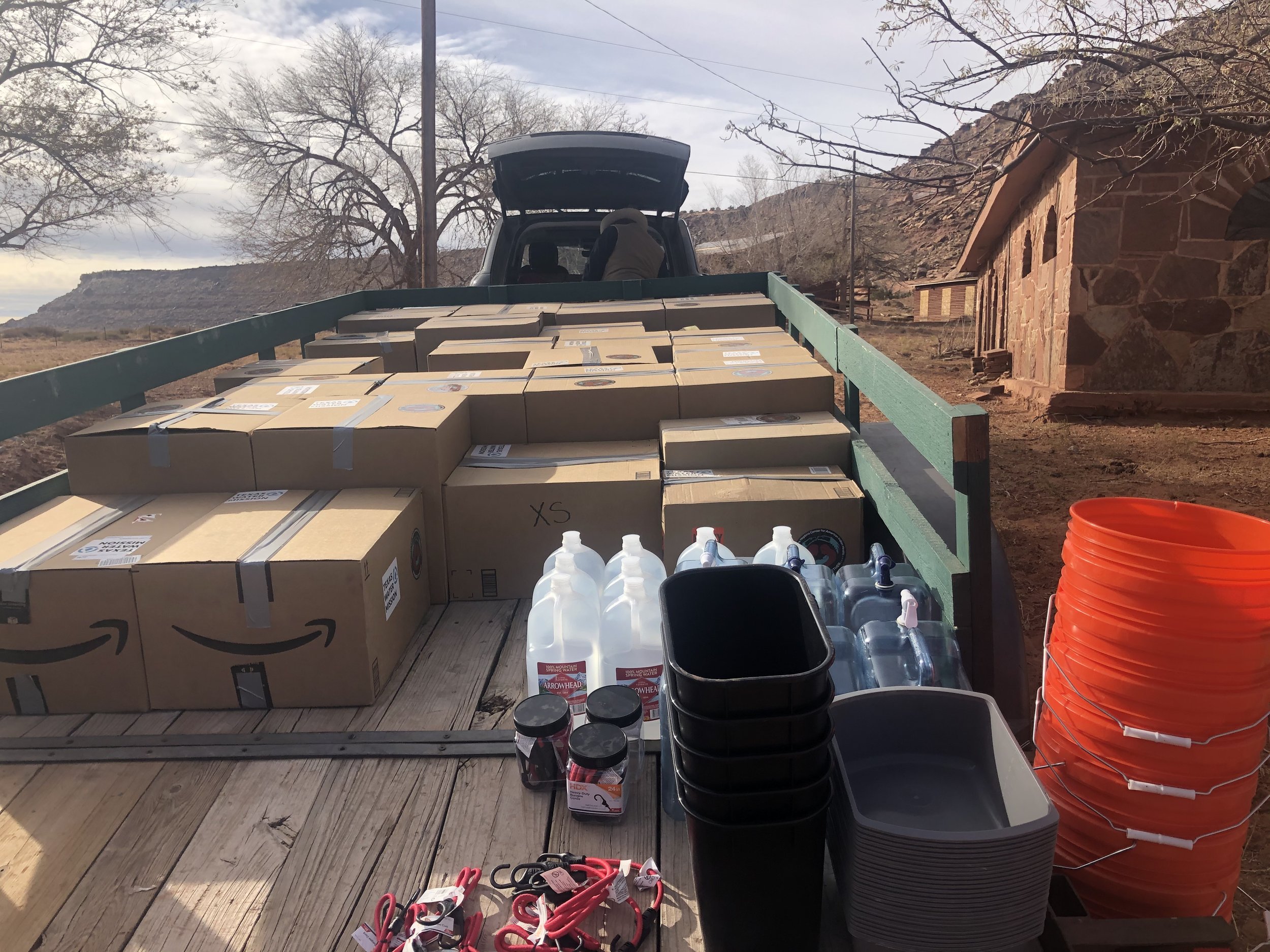
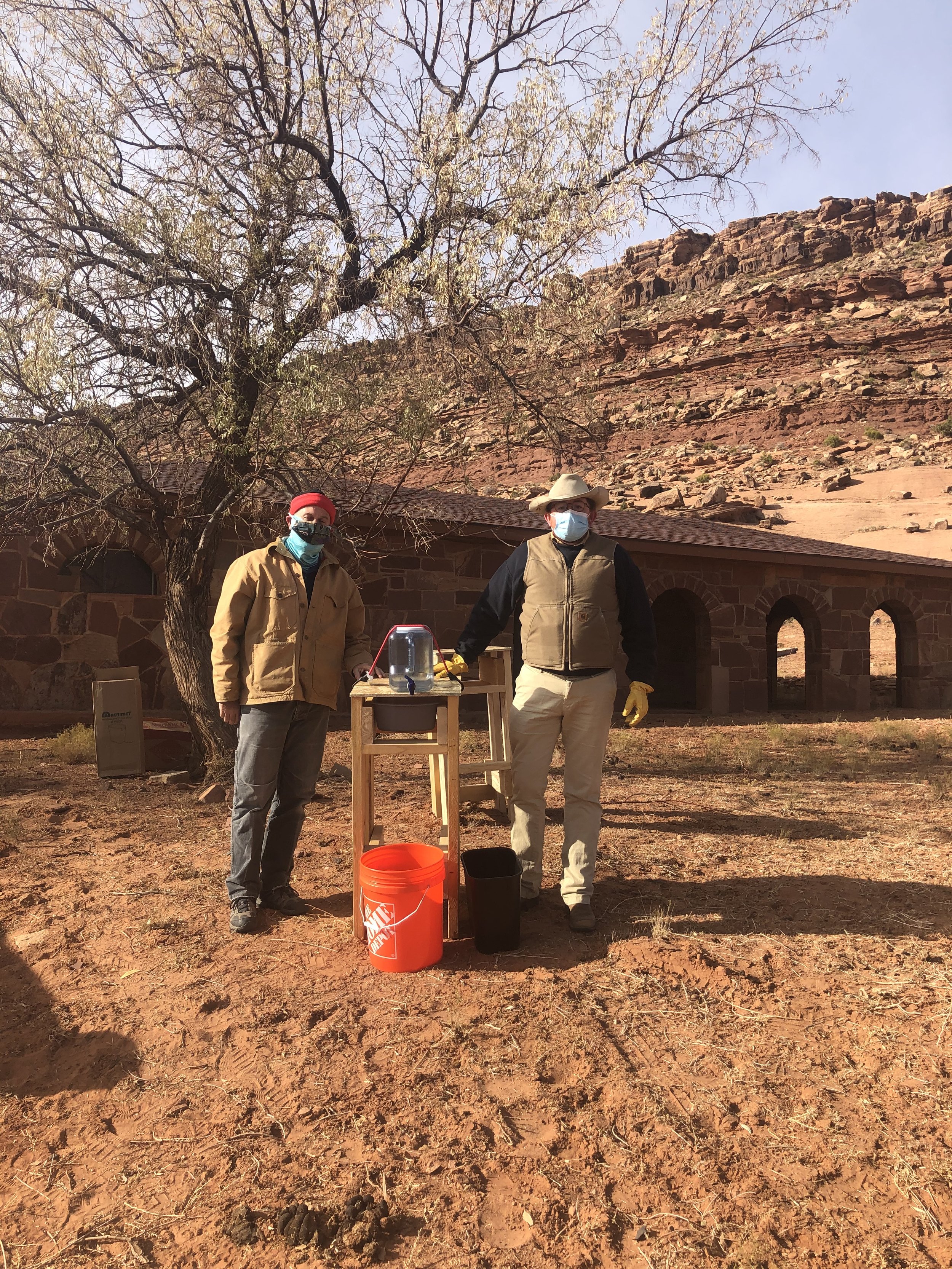


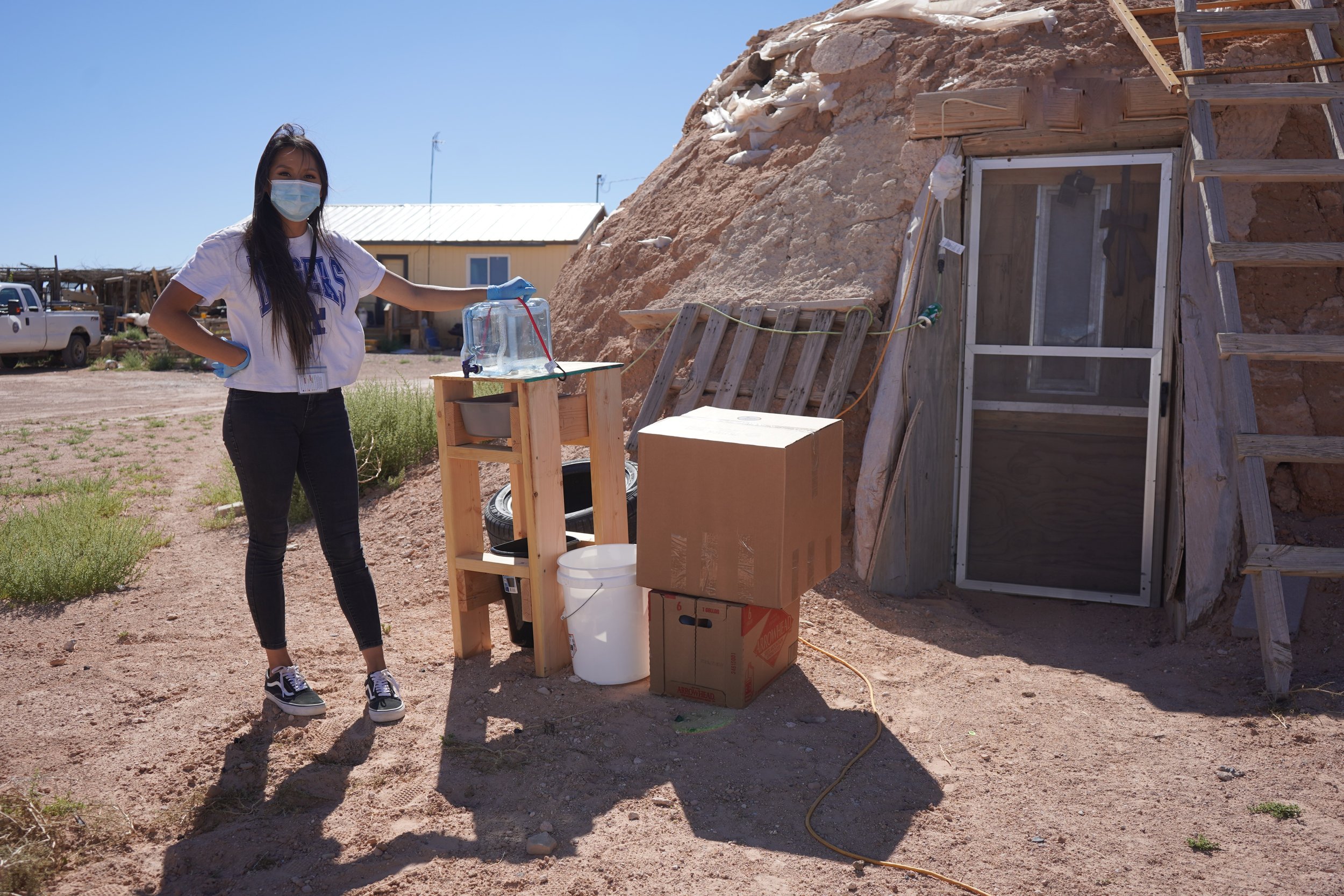
St. Mary’s in the Moonlight, Oljato, Utah
TWM’s current focus is on St. Mary’s in the Moonlight, the Episcopal Church in Oljato, just across the Arizona border at Monument Valley. St. Mary’s also has an artesian well connected to a large groundwater supply and is compiling the information and funding needed to tie into this well and create a public water access site that will be available to the surrounding community as needed.





